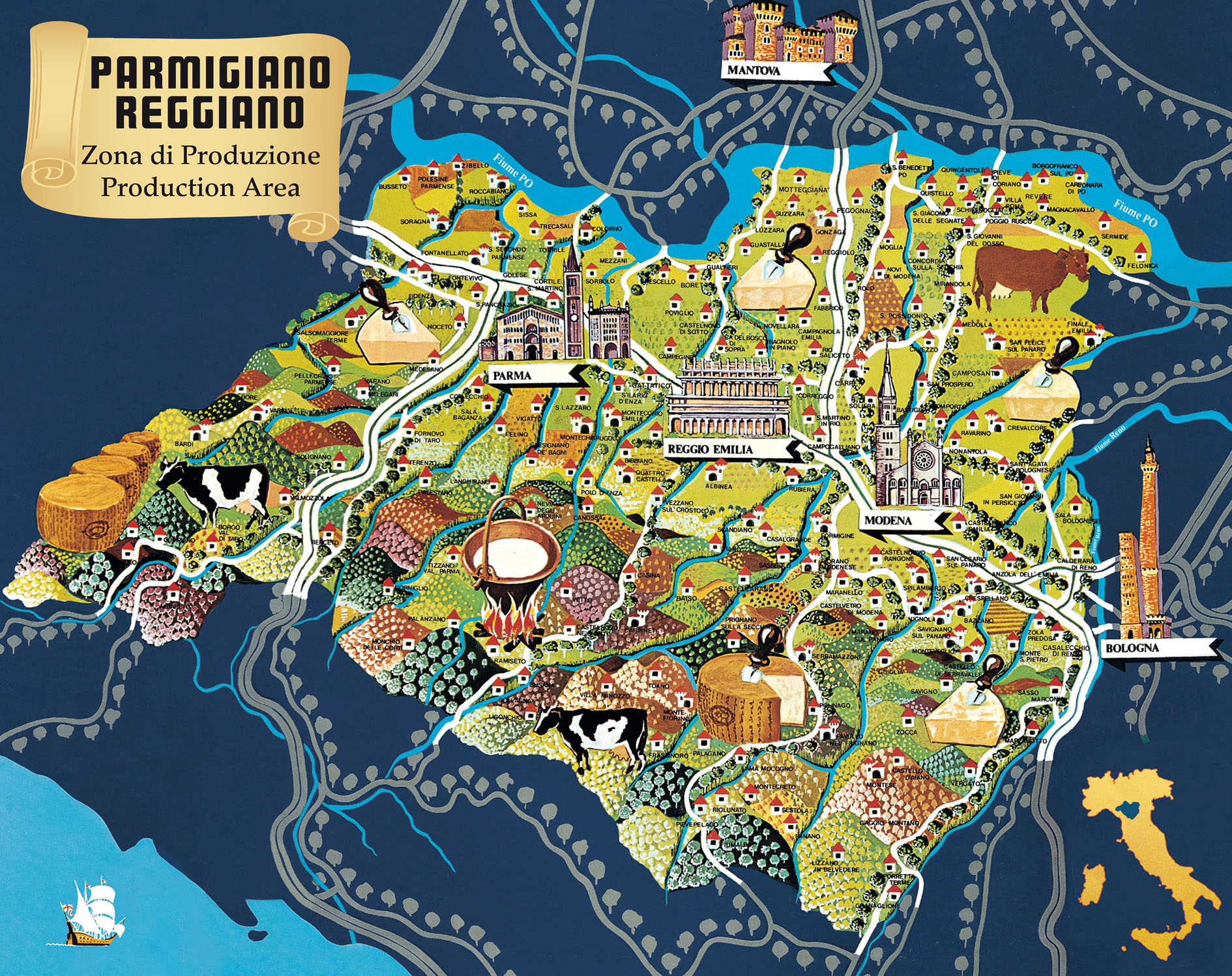Eating your way through Italy

By Eileen Ogintz
Tribune Content Agency
Drum roll, please!
As the cheese master takes his small hammer to the gigantic wheel of Parmigiano Reggiano.
We are in a small factory, Consorzio Produttori Latte Baganzolino, in Parma, Italy, where the way to ensure the region’s famous cheese is up to snuff is by making sure it is solid, that there are no breaks or air pockets inside the cheese.

We look around at the 80-pound rounds stacked floor to ceiling. If the cheese master hears any breaks, the cheese can still be sold, just not with the special seals and stamps that indicate the product meets the industry inspectors exacting standards and criteria, and is worthy of the name Parmigiano Reggiano.
There are no holidays here, explains Giulia Marinelli, our Tours by Locals guide, because to meet standards, this cheese is made from fresh unpasteurized cow’s milk from cows only fed a special diet of natural grains. The cows, of course, are milked twice a day.
Because it is widely imitated, Parmigiano Reggiano has become an increasingly regulated product. The only additive is salt and it’s only produced in certain regions of Italy. The cheese aficionados in your family — and hopefully everyone else — will be fascinated, especially as a visit here is decidedly off the tourist track and one for bragging rights.
Parma is ground central for making this cheese, as it is for the region’s famous Parma Ham, and we also visit Salumificio Conti, a company run by the women of the Conti family. Only a handful of these small companies allow visitors and you must book ahead with a guide like Marinelli. Wow! Look at all those hanging hams, typically aged up to 32 months.

Of course, we end the tours with a tasting.
Food has become increasingly important to traveling families as kids have expanded their palates by first watching the Food Network and then trying new foods on vacation. I can’t think of a better way to experience a new culture than through food or a better place than Italy where it won’t take any coaxing to convince kids to “eat local.”
In Milan, we perused the huge food halls at the Rinascente Department Store where locals take a break admiring spectacular views of the Duomo while stopping at individual food bars perhaps for mozzarella, sushi, a green juice, a panini, even shellfish.
And when we spent a few days at an Umbrian farmhouse owned by Suzy and Bill Menard, proprietors of Washington, D.C.’s Via Umbria, which stocks and celebrates all things from this part of Italy, we picked vegetables in the garden, shopped along with locals at the grocery store and sampled special pastas in the surrounding medieval towns. The Menards will even arrange for cooking classes — perhaps pasta or pizza.
Staying somewhere where you can cook — or at least bring in takeout — offers yet another opportunity to experience a new culture. And, of course, there are websites like EatWith.com or MealSharing.com that let you share a local’s table — just make sure they are kid-friendly.
I’ve hunted for truffles in Tuscany and toured markets in Athens and Seattle at the famous Pike’s Place Market. My family explored Jewish history in Budapest via a food tour there and in Prague, a beer history tour with Eating Europe, which also offers tours in Italy, London, Amsterdam and Paris.
In Paris, we were treated to a food tour thanks to a volunteer guide from the Global Greeter Network. You sign up for a complimentary tour in your language, based on your family’s interests.

The Emilia-Romagna region of northern Italy, meanwhile, where Parma is located is certainly a draw for all of the foodies in your family. It extends from the Apennine Mountains to the Po River and is especially famous for its food and food industry. American baloney takes its name from the mild Mortadella sausage made and eaten widely in Bologna, Italy. Nearby Modena is known for the production of balsamic vinegar. And there is the famous Bolognese meat sauce that everyone here calls Ragu.
In Bologna, we saw the famous sites with Micol Mazzeo, the mother of twins, who welcomes families on her tours — the porticos that stretch for many miles, the Basilica di San Petronio, one of Europe’s largest with its arresting fresco of Heaven and Hell; the University of Bologna, dating back to 1088 and the oldest university in the world. Visitors find the Anatomical Theater irresistible. Here, during the 17th and 18th centuries, students, professors and the well-heeled would gather for hours for the “show” of seeing a dissected body.
But food is perhaps the biggest draw, especially at the historical center of the city where the markets date back to medieval times. There are shops selling just pasta, just chocolate; fish, meat — one sells only horse meat; the hanging Parma hams and huge rounds of the Parmigiano Reggiano cheese. I wanted to eat everything!
I also wanted to bring everything home. However, I learned my lesson bringing sausage back when I belatedly discovered that meat — even vacuum-sealed — is prohibited to bring into the United States. Be forewarned that USDA-trained dogs help sniff out plants and animal products in luggage and carry-on items on international flights and not only will your yummy souvenirs be confiscated but you can be fined.
Don’t be tempted by the meats and cheeses sold at duty-free shops. Check the U.S. Department of Agriculture Animal and Plant Health Inspection Service site before you buy, just to be sure. For example, travelers cannot bring in most fresh fruits and vegetables but baked goods are permissible as are many cheeses, including Brie and Camembert.
Don’t bring anything you aren’t sure is permitted, suggests the U.S. Customs and Border Protection.
That was my mantra — all the more reason to eat more while traveling!
Happy eating!
© EILEEN OGINTZ
DISTRIBUTED BY TRIBUNE CONTENT AGENCY, LLC.
